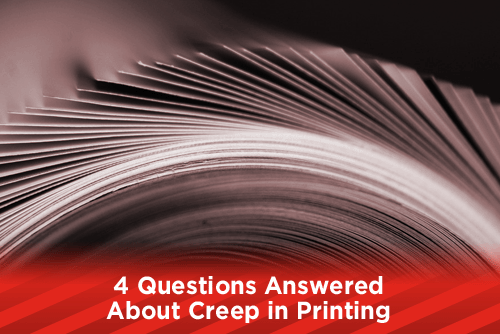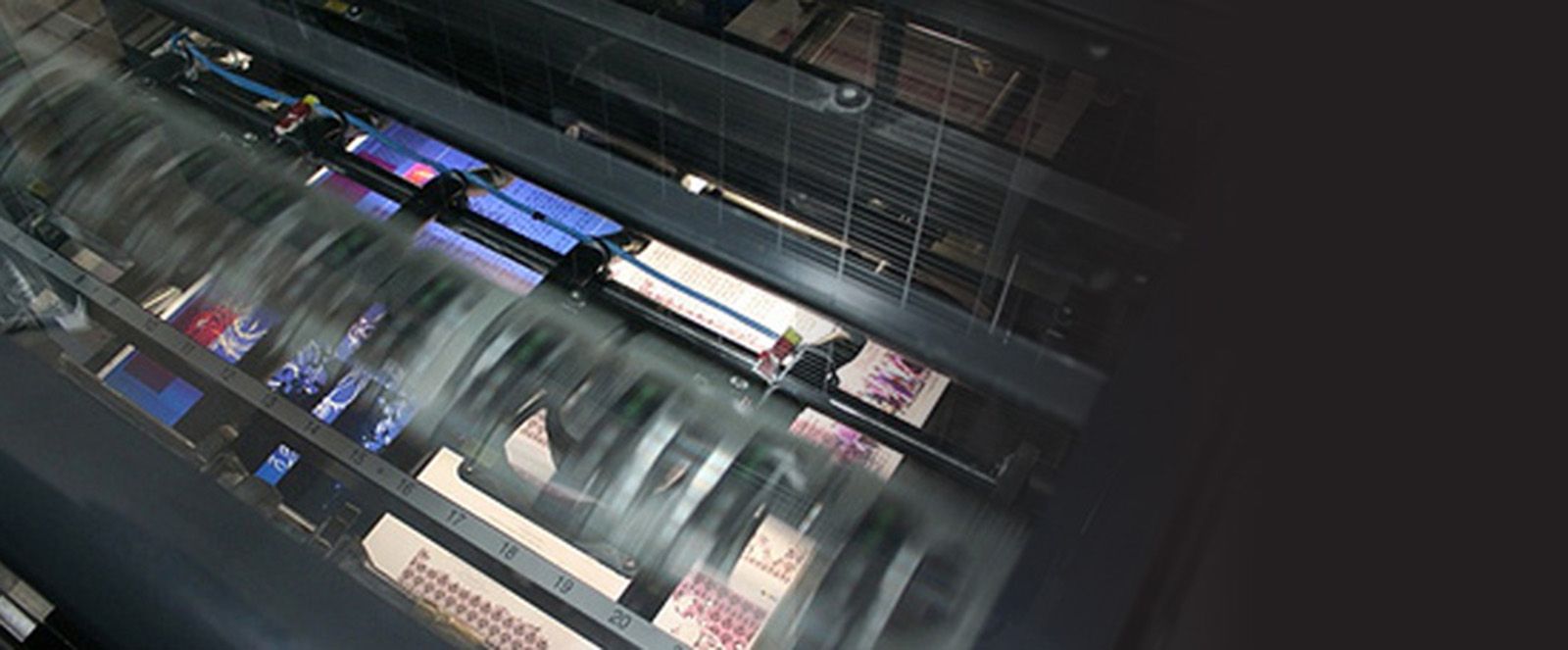
Printing terms are strange. Kerning, Descender, Orphans, Widows, and Strippers are just a few of the words we use that get us weird looks. And then there's Creep. Although we do sound tough when we tell people that "we had to adjust some creep at work." No, we didn't get into a fight. Instead, we did something much less exciting.
What is Creep?
Depending on the weight of the paper, saddle stitched books with over 24 pages will have need to be adjusted for creep (also known as shingling and feathering). Creep is the result of having multiple pages nested into each other, making the innermost pages creep out further than the cover page.
How Does Creep Affect My Job?
When you have a saddle stitched book that is over 24 pages, or printing on thicker paper, as the printed signatures are folded down and nested within each other, the thickness of the sheets will push out the inside pages. Trimming the book, with the inside pages pushed out slightly, will cause the inner pages to be smaller than the final size of the book. If you have any design elements that are close to the edge, like a page number or border, there is a chance that they will be trimmed off if you have not taken creep into account.
How Can I Plan for Creep?
On saddle stitch books that have a lot of pages, try to not put anything close to the outer edges of the book. Leave at least a 1/4 to 1/2 inch space from the design elements to the edge of the paper. Avoid crossovers on any of the pages. Crossovers will be move into the gutter when adjusting for creep, so the middle of the crossover will look strange.
Try to design your book without borders that are square boxes. As the creep is adjusted for, the square box borders will move inwards towards the gutter and the spacing will be off on the left and right hand side of the border. Keep any page numbers simple without design elements that could be trimmed off. Better yet, center the page numbers if possible.
How Can I Adjust for Creep?
It is best to let the prepress department of your service provider adjust the creep, but if you take it upon yourself to adjust it, you will need to know the thickness, or caliper, of the paper you will be printing on. Once you have the caliper, follow this formula to figure out the creep of your pages: # of pages/4-1 = # of spreads. # of spreads x thickness of paper. For a 48 page book printing on 70# offset paper (.005 caliper), 48/4=12-1=11 (# of spreads). 11x.005"=.055" total creep. The reason the -1 is in there is because your first spread does not need to be adjusted for creep.
Once you have your total creep, you have to adjust your pages individually. The items of each spread need to be moved .005" (.36 pt) in towards the middle gutter. On the 48 page book, pages 1,2,47,48 will stay the same, pages 3,4,45,46 will move in .005", pages 5,6,43,44 will move in .01", pages 7,8,41,42 will need to move in .015", and so on until all of the pages have been adjusted.
Adjusting for creep manually is very time consuming. Allowing the prepress department to adjust for creep takes them no time at all. Most imposing software has a place to enter the caliper of the paper and the software will adjust the files as needed for creep. Once you receive the proof for your project, you can see if any areas need to be adjusted more to accommodate creep.
Would you like more helpful print related articles sent to your inbox? Click here to subscribe to our mailing list and receive our bi-weekly article posts every Tuesday and Thursday.

